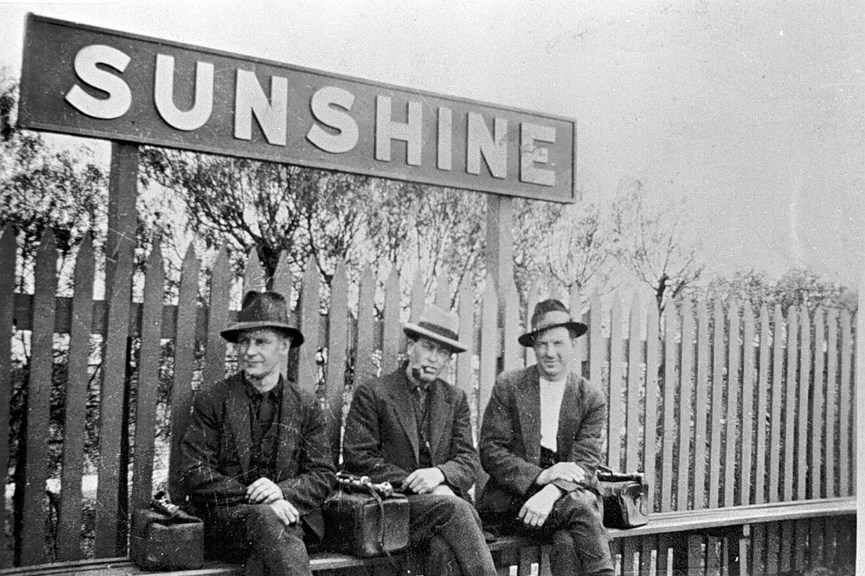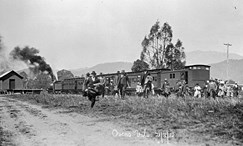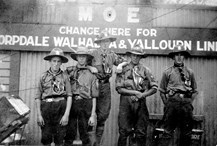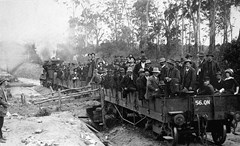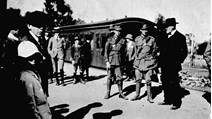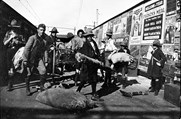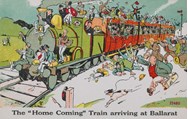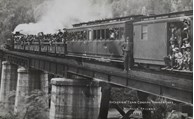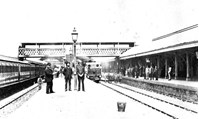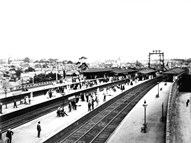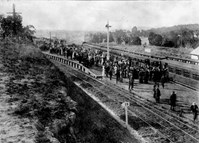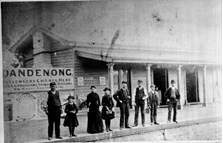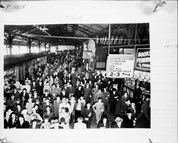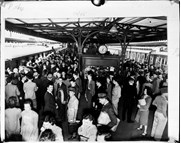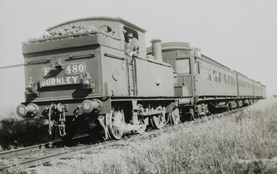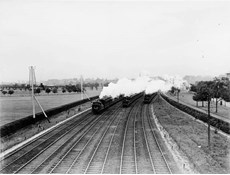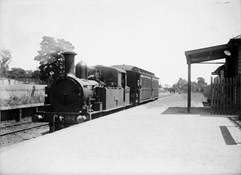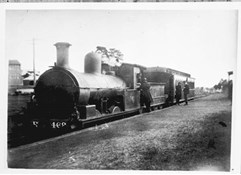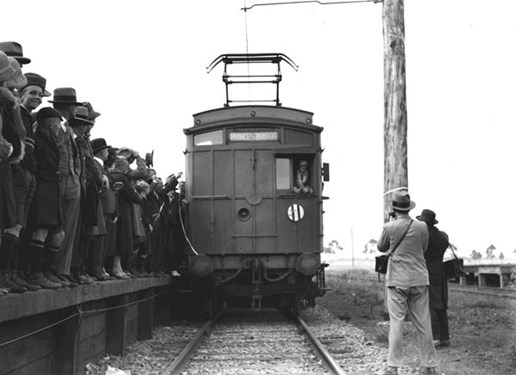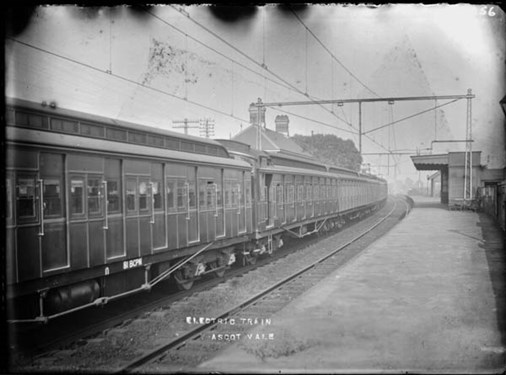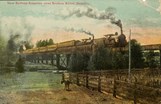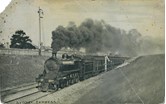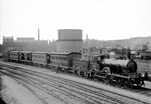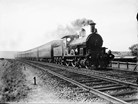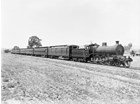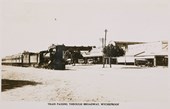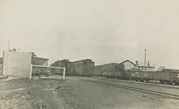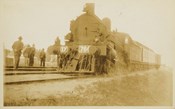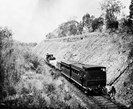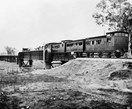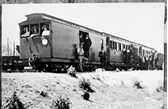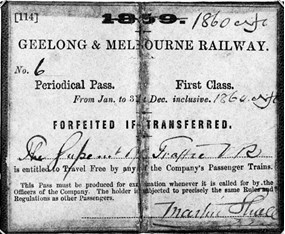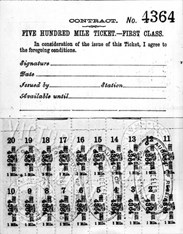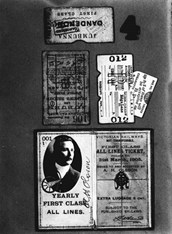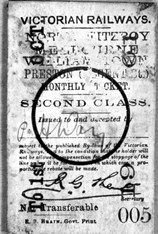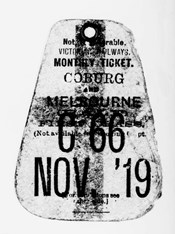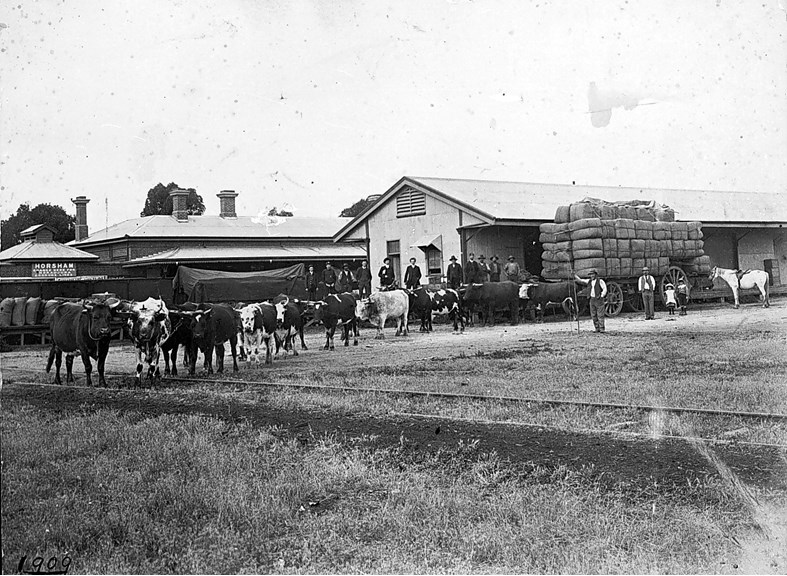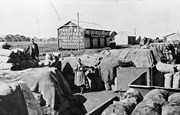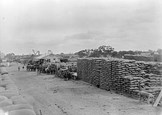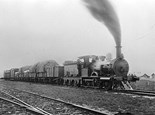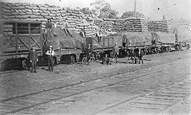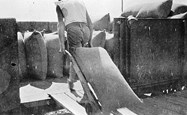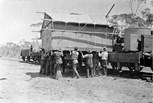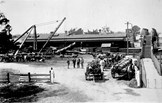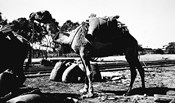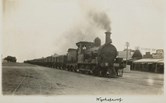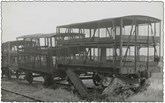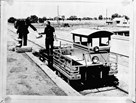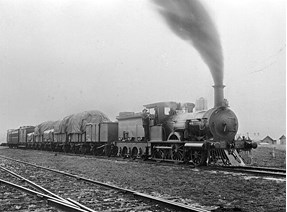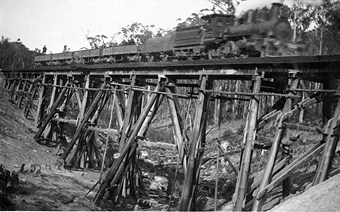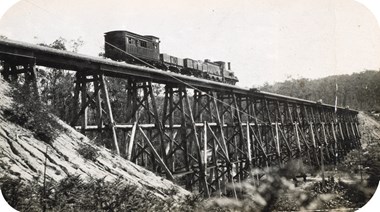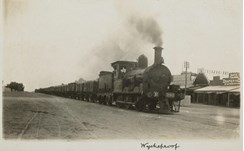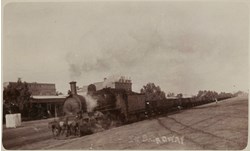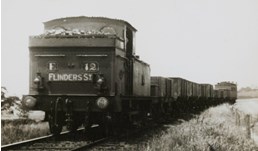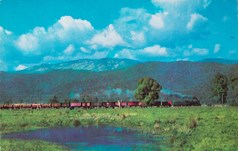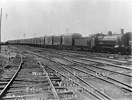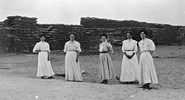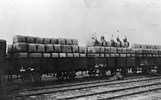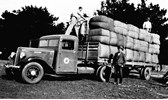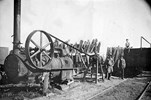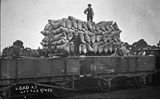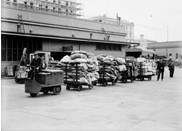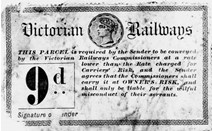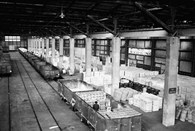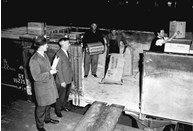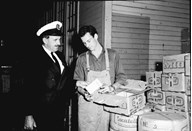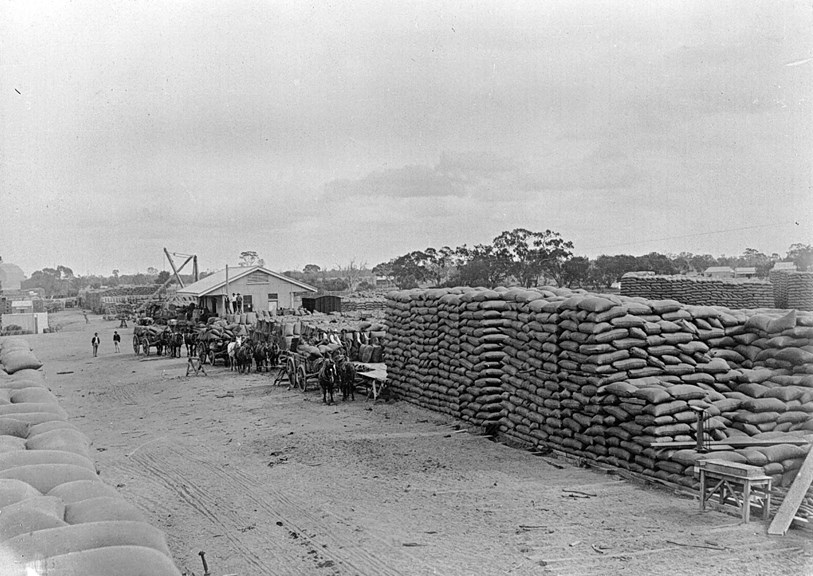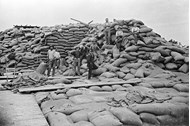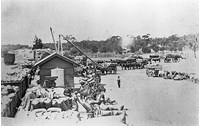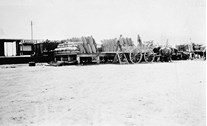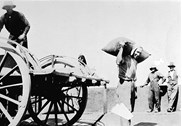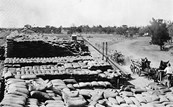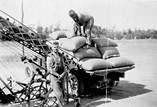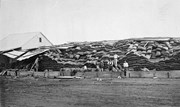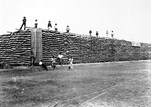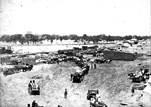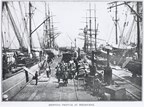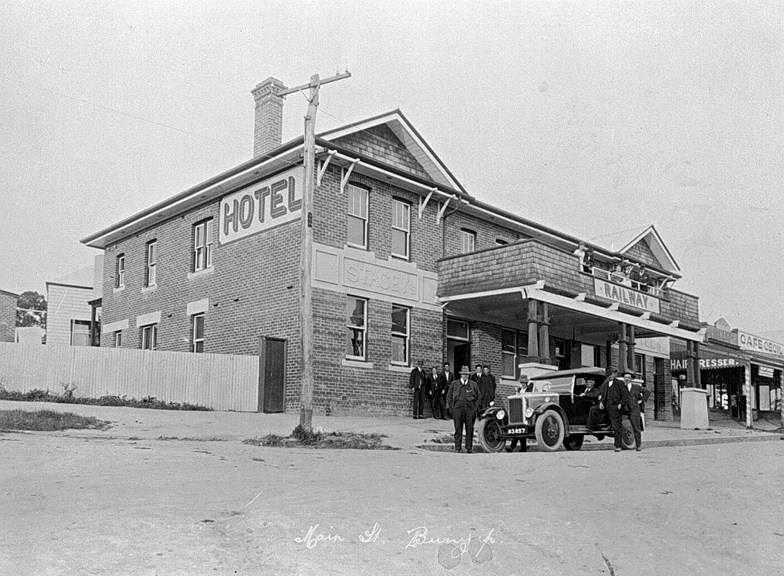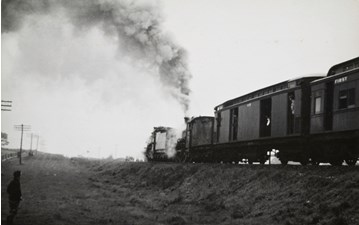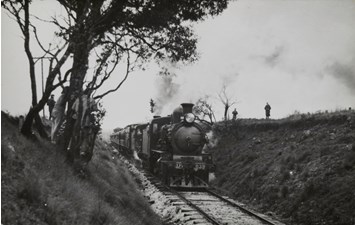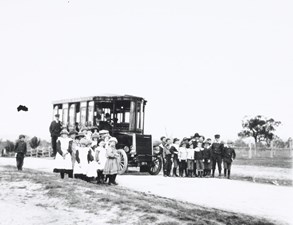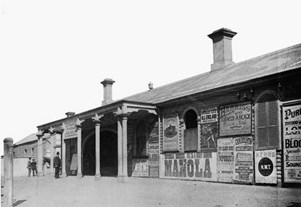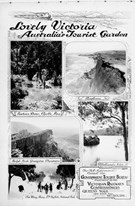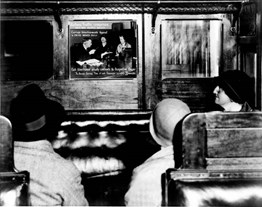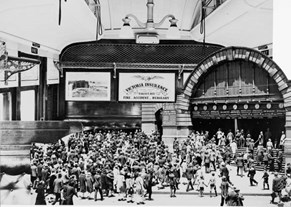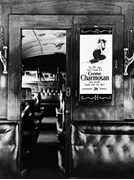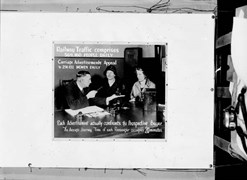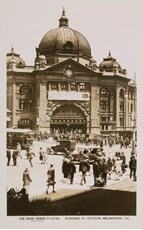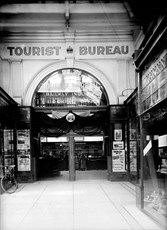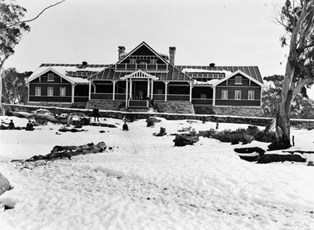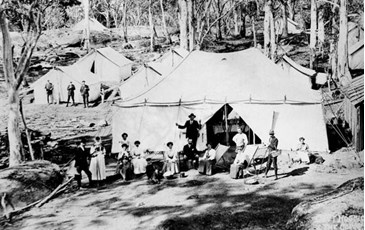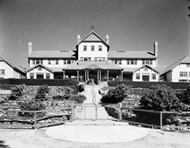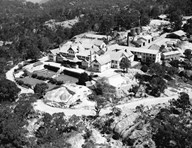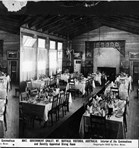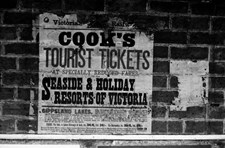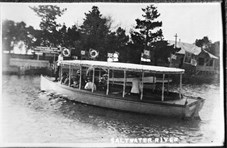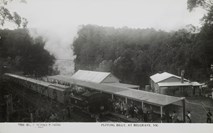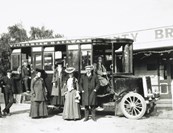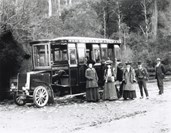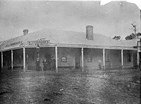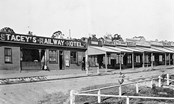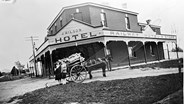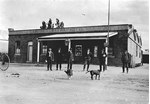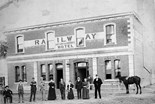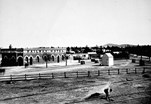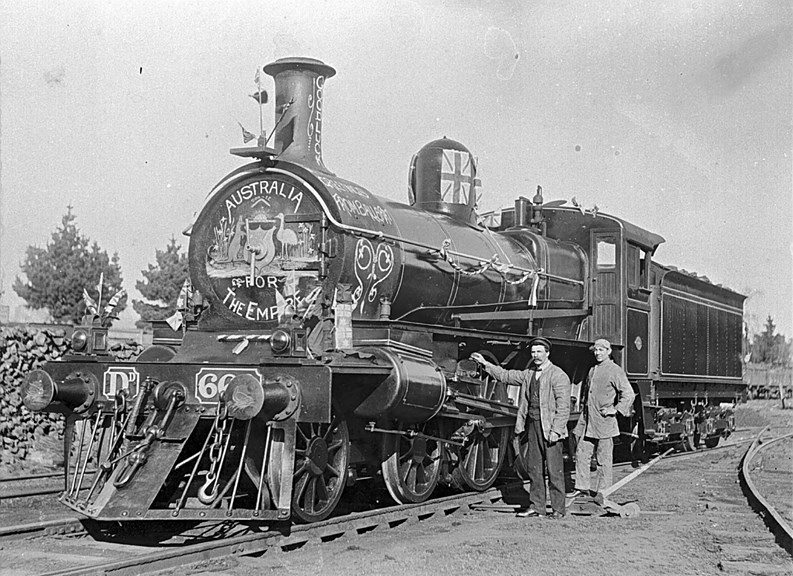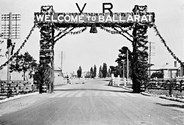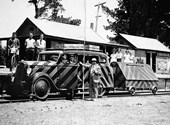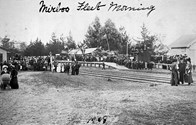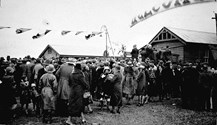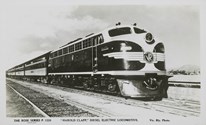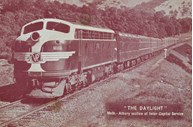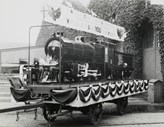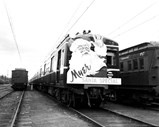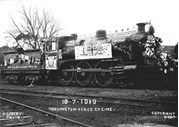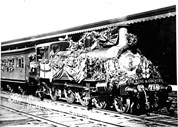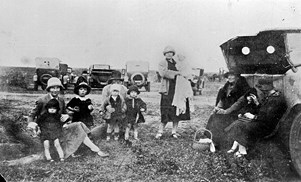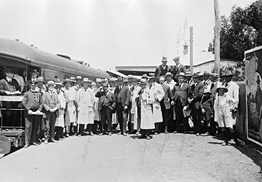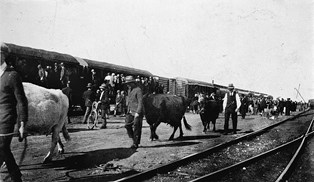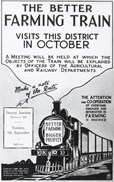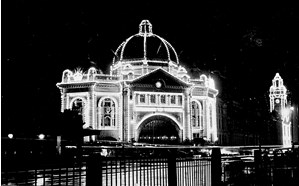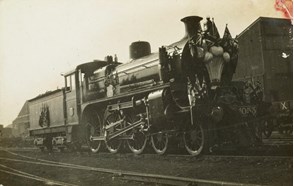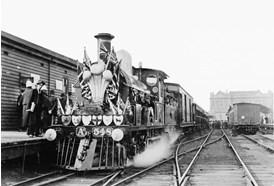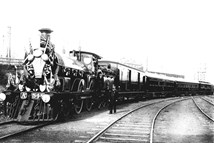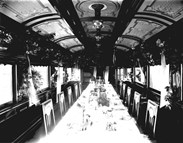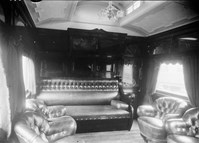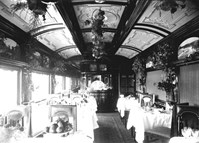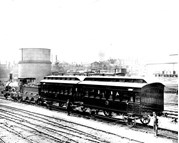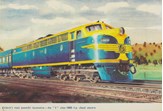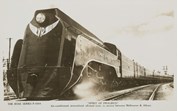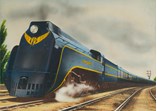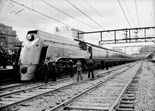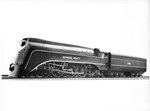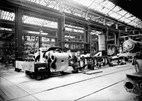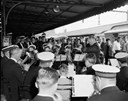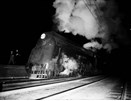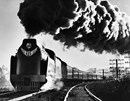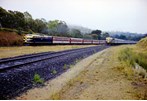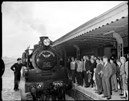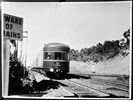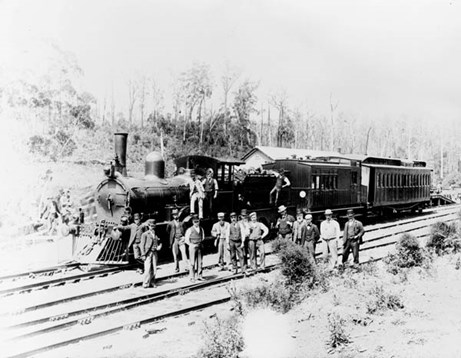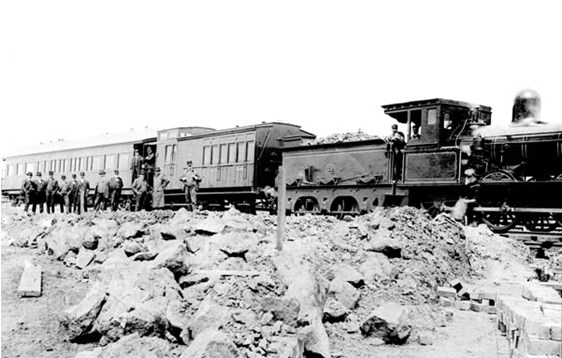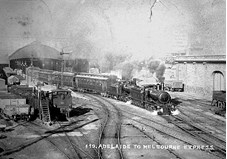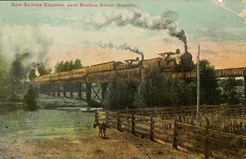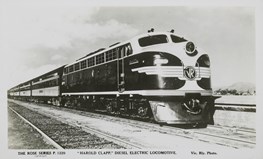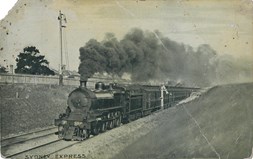Riding the rails
The railways have played a central role in the daily experiences of generations of Victorians. For much of the last 150 years, visiting family in another state, posting a birthday present or sending the harvest to market would have been almost impossible without the railways.
Whilst steam trains today operate as a tourist novelty, for many years they were the height of technological achievement and modern transport. The diesel-electric locomotives that still pull our trains today were an advancement that the whole state took notice of when they were first introduced. The railways continue to provide an important service for passengers who cannot access other forms of transport, as well as these who recognise the social, environmental and personal benefits of train travel. Exploring these experiences allows us to appreciate the continuing fascination many people still feel for trains.
Passengers
Cost, comfort and convenience have been major concerns for rail passengers. Various schemes and technologies have been experimented with to balance customer satisfaction with financial operation of the railways.
Initially passenger numbers on Victorian rail services were modest, due to the limited network. One of the earliest of these was the introduction in 1868 of 3rd-class carriages to encourage country travel. However a significant loss of revenue resulted, and 3rd-class travel was abolished in 1870, to be replaced with reduced fares for 1st and 2nd class carriages.
Rapid expansion during the 1880s saw a corresponding rise in passenger numbers. The 1890s Depression temporarily halted this rise, but the early 20th century saw further growth. In 1920-1921 just over 10 million country outward journeys were recorded, whilst a few years later 160 million outward suburban outward journeys were reported in one year. But in 1931 – when Victorian Railways boasted a station for every town of more than 500 – the Depression had already taken a toll on passenger numbers, with 128.7 million suburban outward journeys and 5.9 million country recorded.
A major change occurred in 1958, when single class travel was introduced on suburban trains. Country and interstate services continued to offer first and economy class fares. These services, such as the Spirit of Progress and the Overland, also introduced new technologies and designs which changed passengers' experience of train travel, including sleeper cars, air conditioning, on-train dining services and on-train bathrooms. The railways enjoyed another modest period of growth during and after the Second World War, but the rise of motor cars from the 1970s onwards precipitated a sharp decline in passenger numbers.
Suburban steam services
Suburban electric services
Express country services
Local country services
Tickets
Freight and parcels
The hauling of freight and goods has been a crucial function of the railways. Everything from wheat to wool, salt to circuses has been transported by the rail system, along with a great deal of mail. The railways have been central to the development of Victoria's primary production and manufacturing industries.
The state government retained control of railways fare and freight transport costs, and directed that freight be hauled below cost in order to support developing industries. Rural and primary production industries in particular received significant support in the form of subsidised freight fares.
Prior to the 1940s all goods transported by rail were handled manually. Staff were employed not only to perform the physical labour of freight handling but also the careful work of ensuring that parcels and luggage were loaded to the rail service appropriate to their destination. During the second half of the 20th century various bulk handling technologies have been installed, with subsequent decreases in manual handling of freight.
Since the mid-20th century there has been a steady decline in railway freight traffic. Changing freight handling technologies, changes in interstate freight haulage conditions, and a political climate generally favourable to road transport have undermined the railways as a competitive freight handler. As freight revenues declined, investment in infrastructure has decreased.
Country goods trains
Serving rural industry
Urban freight
The wheat harvest
Victoria's wheat industry has had a close association with the railways. For the railways, wheat has been an important freight item, while for the wheat industry the railways has been an essential hauler of produce.
The railways and the wheat industry expanded together; in the Mallee wheatbelt the railways would at times precede settlement, with farming towns established in the wake of the rails. Wheat carted from these farms was transferred to goods trucks at the local rail siding, and then transported to Victoria's major export ports to be loaded onto ships.
Until the late 1930s all wheat had to be packed into sacks of a size able to be manually handled. Each sack was then individually loaded through the transport chain between field and port. The enormous wheat stacks photographed at railway sidings during the early twentieth century are impressive not only for their bulk but also the amount of human labour required to build and then disassemble them. A mobile workforce of casual labourers handled the annual wheat crop at both the rural railyards and the Melbourne docks.
In the late 1930s the introduction of silos, conveyor belts and custom-designed trucks greatly reduced the handling of wheat freight, with a resultant reduction in labour. Silos to some extent reduced the mouse plagues which had destroyed wheat stacked at sidings. Whilst most wheat had been loaded to ship through the Williamstown port, the construction of a bulk wheat terminal at Geelong in the late 1930s diverted the harvest.
Tourism
In 1888 Victoria welcomed a huge influx of interstate and local visitors to the Centennial Exhibition at the Exhibition Buildings. In anticipation of increased recreational travel Victorian Railways established an 'Inquiry Office' at Spencer Street Station to advise those wishing to see the sights of Victoria. The service was retained beyond the exhibition period, and expanded to act as a central and interstate booking office as well as providing accommodation information.
The service was renamed 'Victorian Government Tourist Bureau and Central Railway Booking and Inquiry Office' in 1908 and relocated to the city centre. Additional offices were established in rural and interstate locations. This Bureau continued as the central tourist information provider in Victoria until 1959.
Through the twentieth century Victorian Railways produced a diverse range of tourist posters to be displayed in stations and on train service. In addition to promoting tourism within Victoria in general, Victorian Railways also owned and operated several tourist destinations – including the popular Chalet at Mt Buffalo National Park.
Historic railways themselves have now become a significant tourist attraction. Various operators throughout the state run steam trains as heritage and tourist enterprises. Rail heritage continues to generate significant interest, with several static-display rail museums operational throughout the state. Some closed rail lines have been reopened as 'RailTrails': shared-use paths accessible to walkers, cyclists and horse-riders.
Advertising
Chalets, spas and seaside
Puffing Billy and the Dandenongs
Railway hotels
Special trains
Trains have been used in a variety of ways beyond simple transport. As a potent symbol of modernity and national achievement, the railways were used in promotional campaigns for various government initiatives.
One of the best illustrations of the important role railways played is the Centenary-Jubilee train which travelled the state in 1951. Eleven carriages contained a diverse touring exhibition, including paintings from the National Gallery, models of gold mining history, diagrams of the Snowy Mountains Hydro-Electric scheme and an outline of railways history, which was viewed by over half a million people. Earlier in the century the Better Farming Train had travelled the state to educate rural communities about new farming technologies.
The S-class locomotives of the Spirit of Progress service were a popular symbol of state pride and industrial development. Various other standard services had special names that would appear on the timetable, including 'Fruit Flier', 'Mildura Sunlight' and 'Train of Knowledge'. Particularly for rural communities, these railways were the main link to metropolitan and international events. The importance of these connections can be seen in the popular opening ceremonies which accompanied the completion of a new train line.
